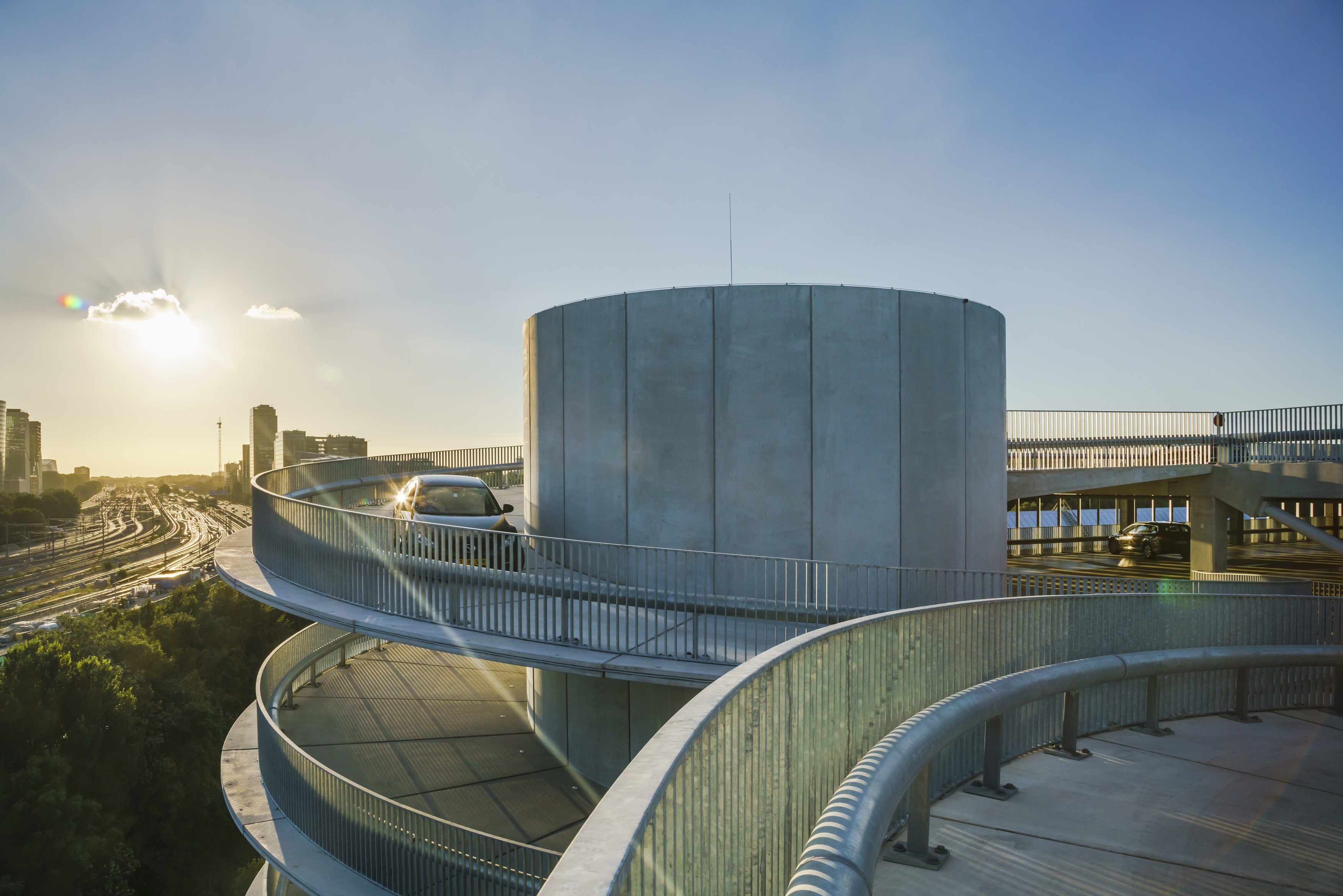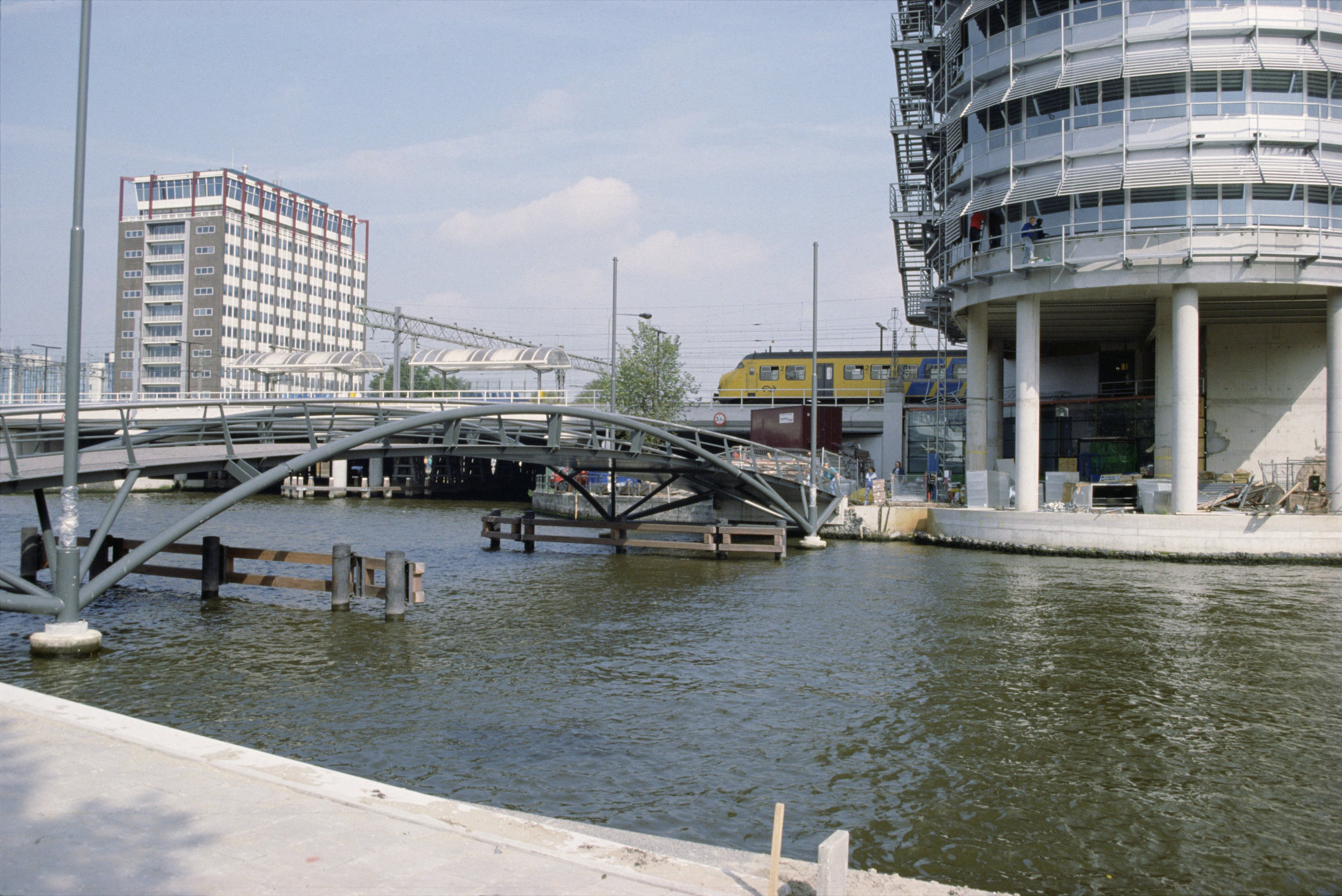Amsterdam Central Station Bus platform
Amsterdam Central Station now has a very safe and efficient bus station: travelers never have to cross a bus lane, and elevators and escalators provide easy access to trains, ferries and metro.
A bus station designed for travelers
The elevated bus platform is visually connected to the train platforms, and the free space underneath the bus station becomes the exclusive realm of cyclists and pedestrians. The new roof matches the monumental power of the existing roofs and their construction. With the addition of the bus station roof, the entire station is now covered by four arched roofs, designed by three different architects over a time span of almost 130 years – a beautiful symbol of the continuously changing and evolving nature of Amsterdam Central Station.
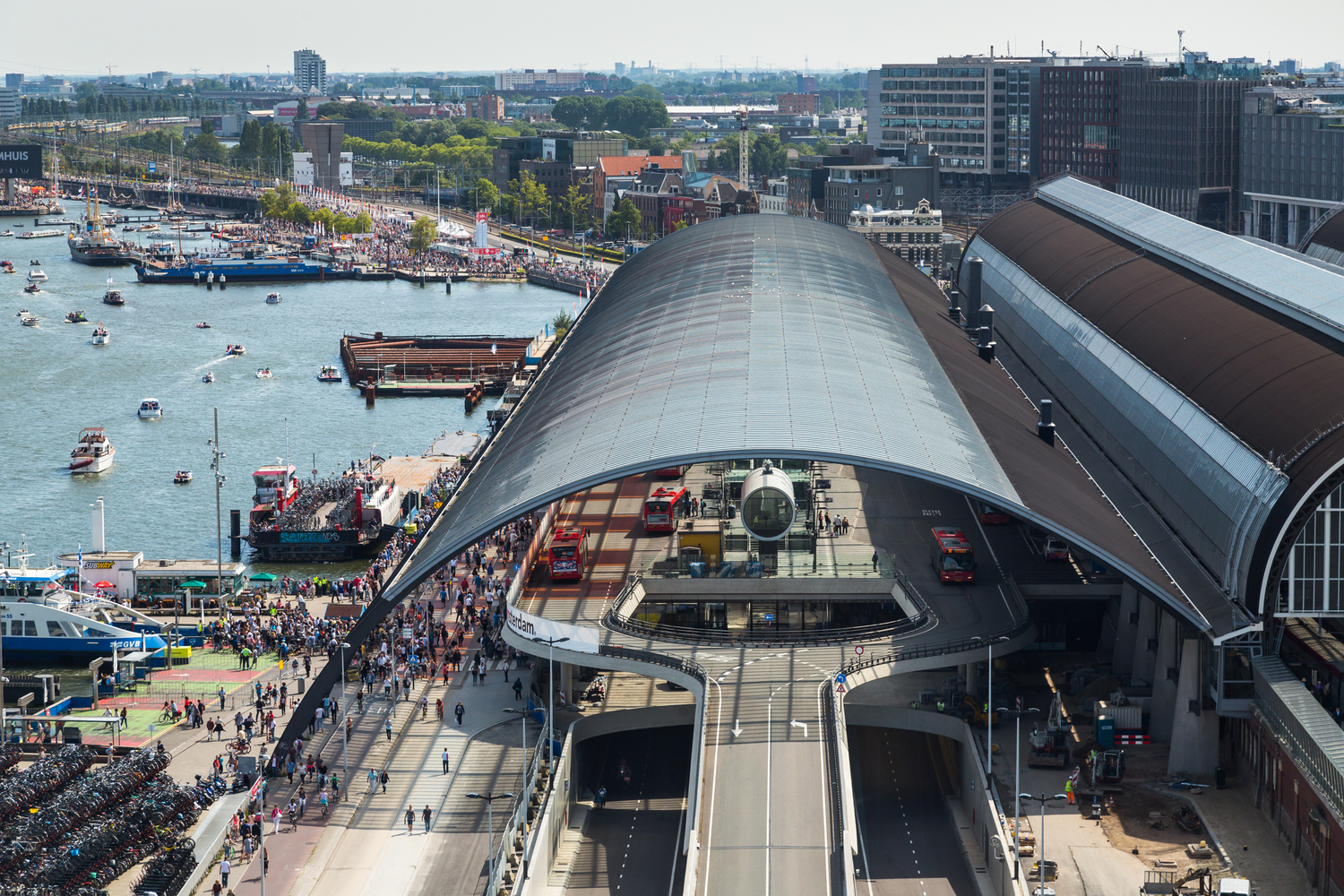
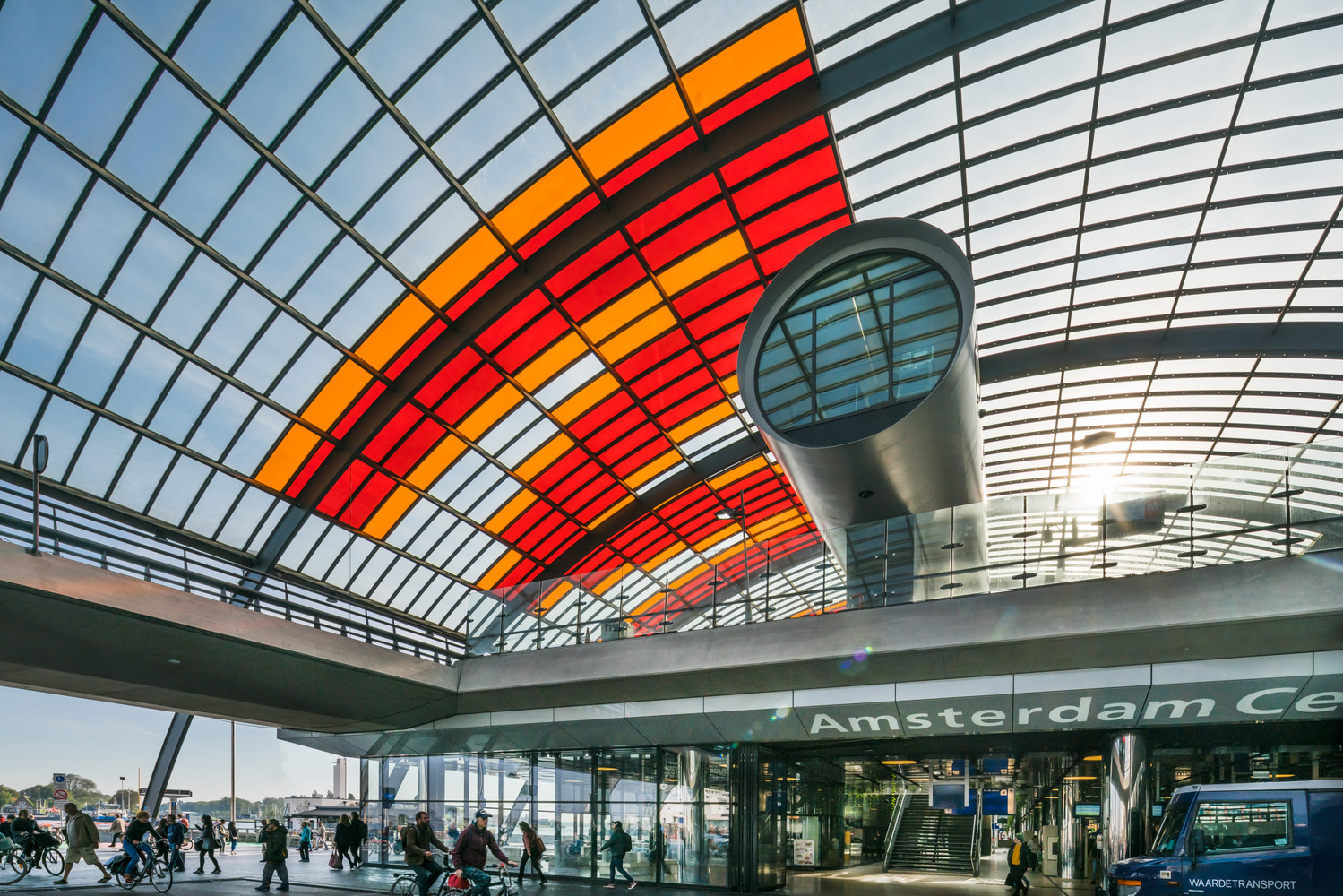
Dappled light effect
Red and orange transparent films in the glass plates of the new bus station roof spell out the word AMSTERDAM in giant, 22 metres high letters – giving the station emblematic visibility along the southern bank of the IJ. The colored panels refer to the former advertising texts in the gables of the monumental steam roofs and create a stunning, dappled light effect on the bus platform.

A shared space
All public transport modalities at Amsterdam Central Station are vertically separated and do not cross or interfere with each other. The bus station and train tracks are elevated, the metro lies underneath the station, and cars are guided below the IJ boulevard through the Michiel de Ruijter tunnel. This way, ground level is the safe domain of cyclists and pedestrians. Taxis and the kiss & ride area are located on ground level, but clearly set apart from the slow traffic flows.
The area in front of the ferries is organized according to the so-called ‘shared space’ principle. Without signage or traffic lights, slow traffic only has to follow one rule: give each other priority when it makes sense. The shared space principle keeps the traffic flows moving without too much interruption and works surprisingly well, even at rush hour.

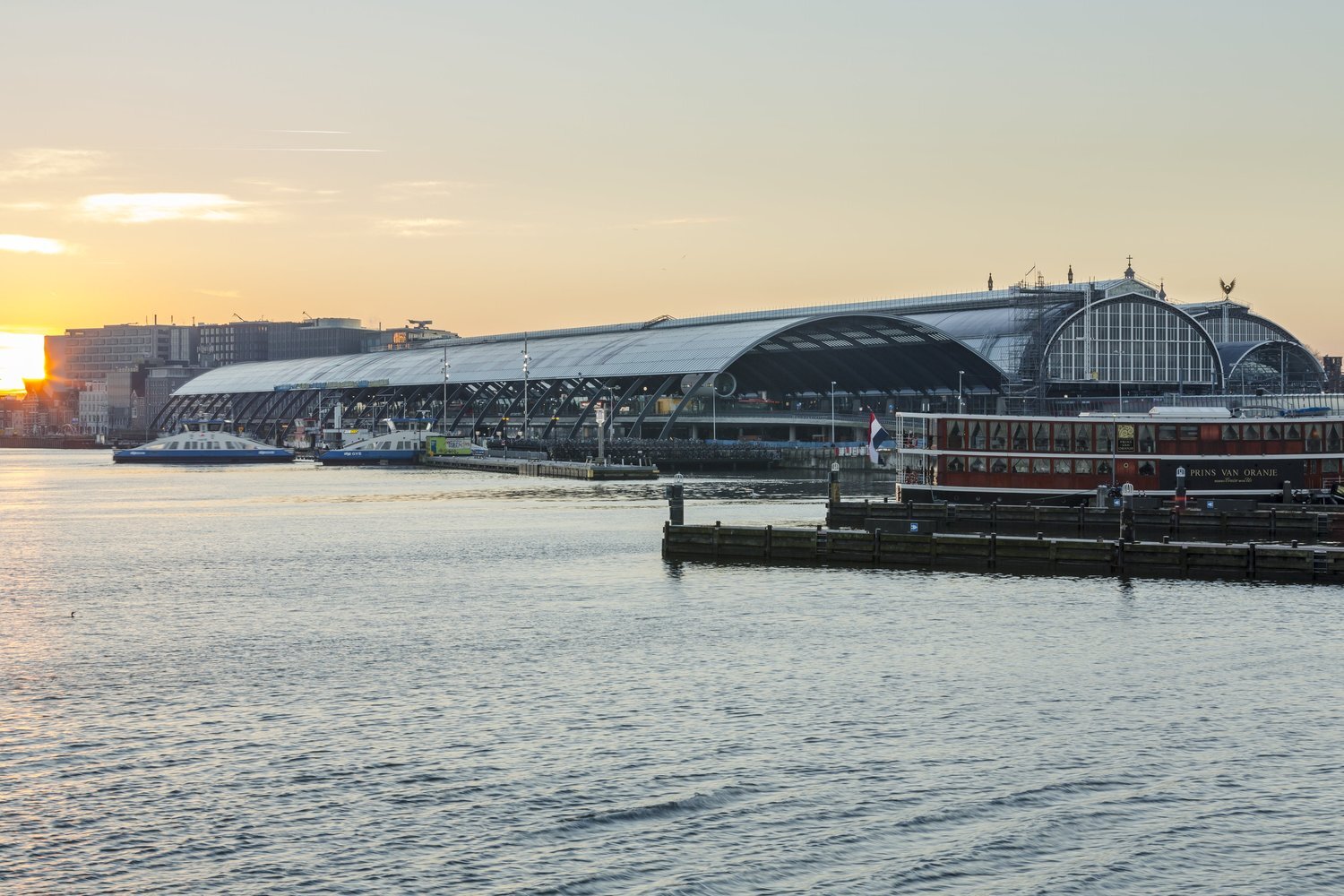
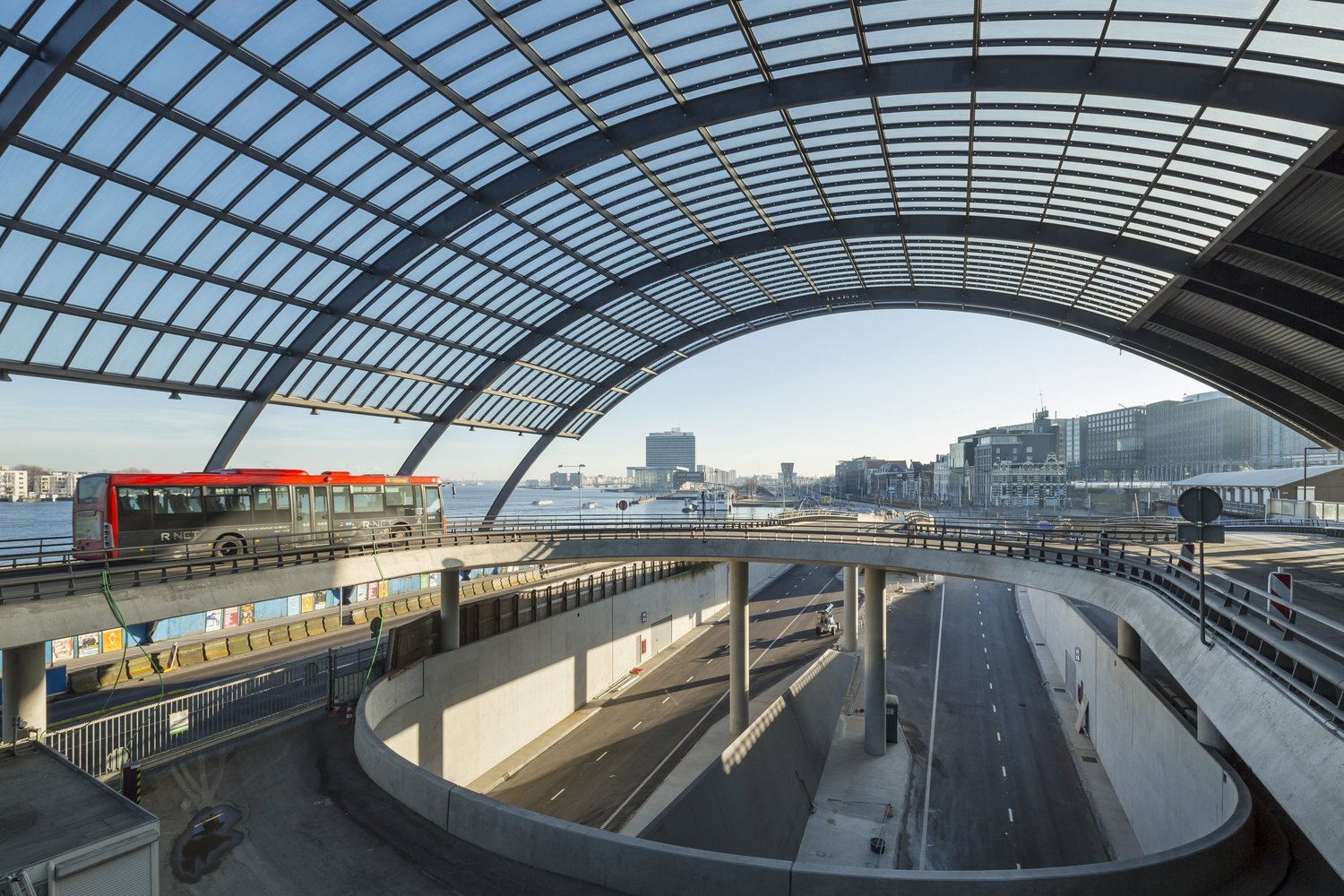

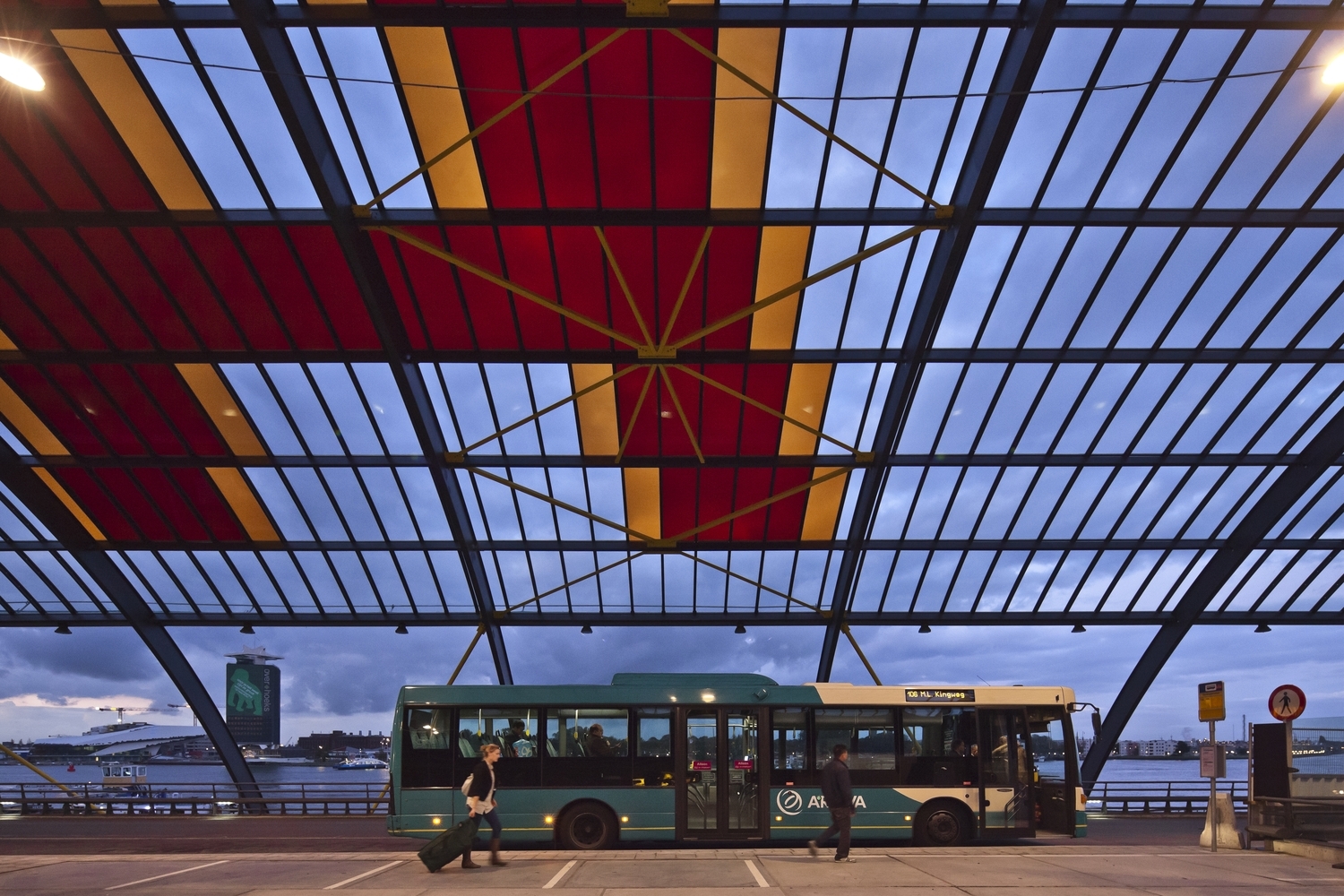
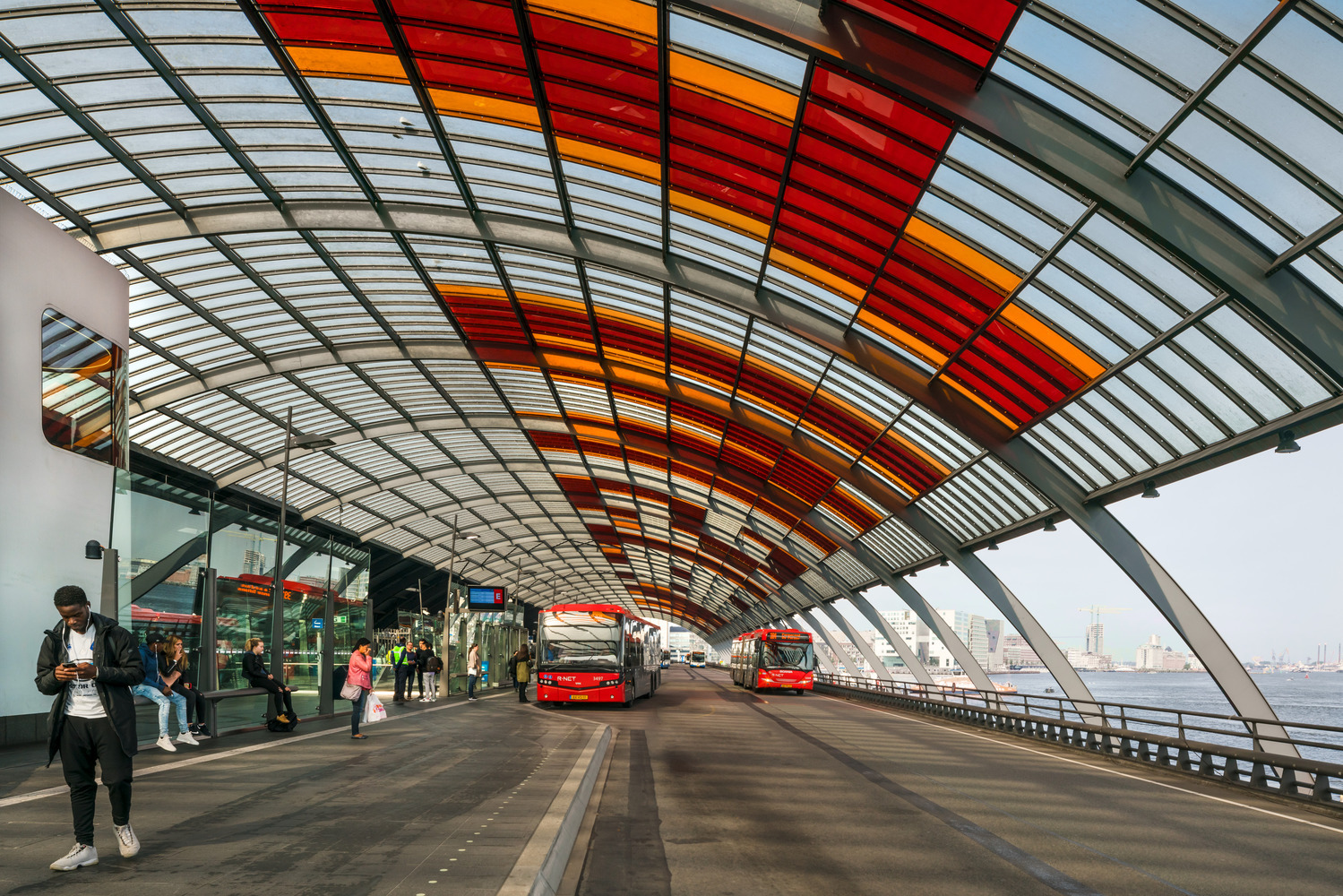

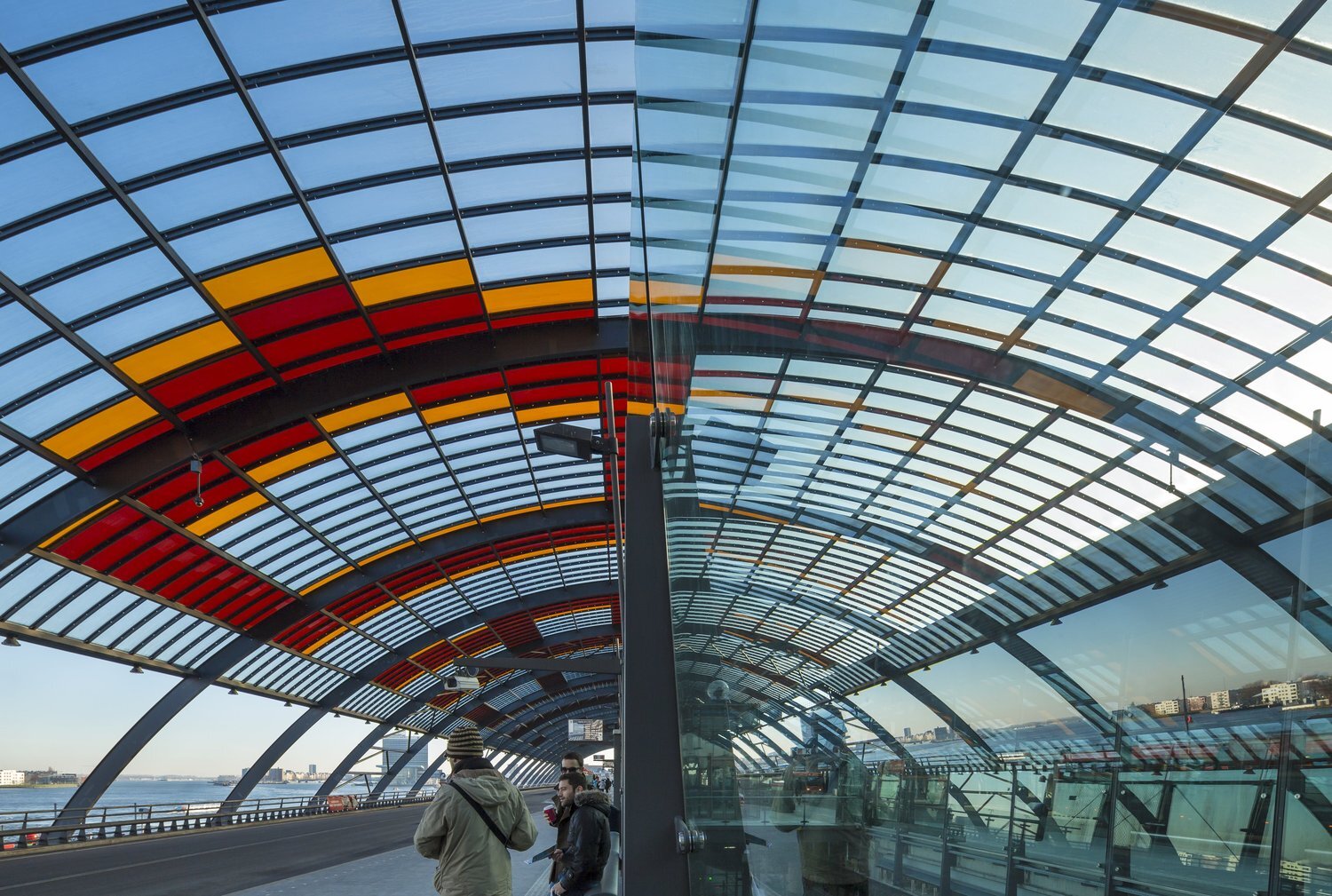

—

